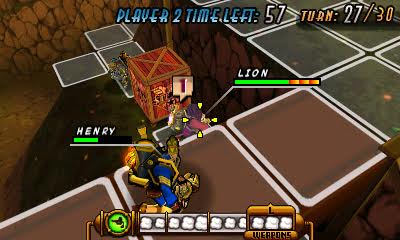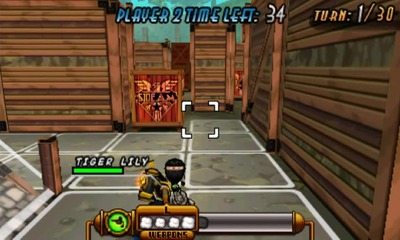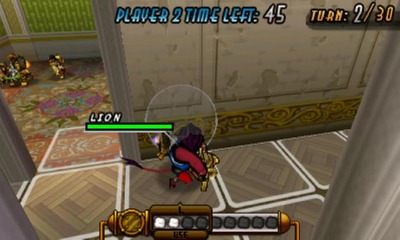The enemy has breached your territory with a flanking strategy. Camped by your only means of escape, normal routes are inaccessible. Steam was spent on a risky strategy, and now you’re losing steam in another sense. All the while, a determined agent shouts, “I will not be stopped!”
Code Name: S.T.E.A.M.’s multiplayer can play out like the bitter conquest above, where territory control shifts in favor of one side and necessitates meticulous planning. Other times, the mutual prolonging of tactical advantages results in even competition. Either way, participating in the four-on-four premise is a test of thoughtful leadership and discipline. Knowing which openings to take, which to save and which to flat-out avoid can be the difference that turns the tide, as short-term gratification often leads to a swift demise.
After spending hours in random matches and official tournaments (one of which I took 1st in), here are the six maps ranked on design and play experience.
See you on the battlefield!
6. Miner Skirmish
Picture a game of capture the flag where parties barely step outside their base, or a game of chess where you’re constantly in check. Such is the experience of Miner Skirmish. The map presents a botched catch-22: If you don’t make the first move, you’ll be stuck with leftover items; if you do, you’ll expose yourself to attacks from high up. Approaching from the sides isn’t much more favorable, as the corner sections are death traps if the enemy can attack from a distance.
The constant feeling of restriction is bad enough, but you’ll find control is quickly given to one side and then maintained for nearly the entire match because of camping. Furthermore, your fate is greatly influenced by who your opponent enlists. In particular, you will be hard-pressed if Califia is in play, as the design favors her extended range, making it easy for aggressors to stock up on power-ups whilst also keeping you fenced-in.
Miner Skirmish is a flawed map that’s entirely about coercion through camping.
5. War Over Resources
Despite its simplicity, it is by no means drab. Yes, it’s a flat field, but multiple paths are on offer through the arrangement of tin barrels, item crates and the like. As well, splitting up isn’t a forced strategy like on other maps—you can move forward in a huddle if you so choose.
The extreme left and right offer opportunities for surprises (spoiler!), while the middle features a string of destructible objects that separates the field into two sides. However, relying on this area as the backbone of your strategy is often risky. Some opponents behave like the Berserker aliens, going on a rampage and destroying everything in their path (Califia, Queequeg and Dorothy being the most frequently-used accomplices). But most I’ve seen are more cautious about which crates they pry open.
For what is essentially a training ground, its design offers surprising longevity over the long haul.
4. Final Exams
In Final Exams, it’s all about playing the cards you’re dealt. Its design is like a coliseum but without the grandeur and bold architectural features. It’s basically three floors, with a central structure resembling a pyramid that was twisted in the center like a Rubik’s Cube. The pits to the north and south act as safe zones where you can regroup while protected by front and back walls. Additionally, sets of stairs lead to the top of the structure, where two narrow bridges connect to an outer ring that covers the perimeter.
Initial strategies are dictated by agent distribution. Queequeg could begin on the outer ring, effectively giving him command of an entire strip along with defensive capability over the center staircase. Ultimately, the metal bridges, along with careful placement of item crates, prevent this level from souring because of its design.
Between the fixed concealment opportunities, the battle for the center and the power dynamics with the outer ring, Final Exams preys on the weaknesses of the ill-equipped.
3. Hidden Conflict
Hidden Conflict is favored a lot online—understandably, as it’s well-balanced. There are enough divisions to keep players protected if they plan well, with opportunities for experimentation between games to keep from regurgitating tactics.
Four ramps allow access to the higher plane, and a few spaces along these upper paths are on stacks of crates. Destroying these will accomplish one of three things: permanently prevent your opponent from accessing the full range of spaces, trap them in a small section or make them have a nasty fall. Admittedly, the paths don’t have a far outward reach, but because there are four quadrants with this make-up, it sufficiently keeps things leveled and fair.
Because of the ample possibilities for suspense, the map is at its best when teams are down to two agents or less, for then it becomes a game of hide-and-seek and a test of survival, knowing when not to take an opening if it means the surviving agent will bring about your demise.
Games are rarely written in stone here, and that’s what’s endearing about it.
2. Quiet, Please
Quiet, Please ranks second-best, though some may consider it the best simply for the lack of items. Singular, tall bookcases offer stable cover, encouraging a shoot-then-hide strategy. The wide bookcase in the middle separating the two territories is where much of the battle will take place.
I’ve seen some run ahead with all guns blazing to force the other team backward. Conversely, I’ve also seen rivals keep their team huddled at the back as bait, or do a variation of this strategy where characters like Tiger Lily and Tin Man pop out only for support. Because there are two access points to reach enemy territory, savvy tacticians will strive to keep opponents pinned to one side.
What makes this map unforgiving is the closed-quarters combat and how the bookcases are arranged, making agents prone to far-away sightings. Thus, keeping an element of surprise is difficult, but you’d be surprised. I desperately had to recalculate upon realizing that my opponent gave Tom a Supply Cannon, allowing him to generate item crates!
Success comes down to strategy and keeping your agents covered.
1. Royal Intrigues
Confusing and frightening—such is the nature of Royal Intrigues, making it a stunner as a battleground. No map better conveys tension and the need for planning, as players make their way in and out of connected rooms. It’s disorienting to navigate (particularly for Player 2 initially), but in a good way.
The design thrives on subtlety, stealth and caution. Because of the close proximity and the constant danger of being attacked from nearby, it incites panic. It’s super easy to lose your cool and rush ahead as time winds down, and even easier to run out of time because of adopting a slow pace or being precise in your setup.
Royal Intrigues is also unlike any other map because listening is key to survival. In addition to watching for clues, such as the numbers that appear after collecting pick-ups, it’s imperative that you listen for footsteps to pinpoint enemy locations. Knowing this impacts the way you play, not moving hastily for fear that you’ll compromise your location.
You can’t afford to be complacent, and that’s what gives Royal Intrigues strong staying power and helps cement its controlled chaos. With the frantic nature of switching cameras to spot your rival and the role that sound design plays in support of its objectives (including music that perfectly captures the tension of the affair), it’s truly a fantastic map that will continue to test even the most experienced captains.
Jose Cardoso is a freelance writer who’s prone to exalting words above people. Fascinated by game design, he has a knack for covering the quirky, niche and overlooked on Nintendo platforms. His writing has appeared in Unwinnable, BeefJack and other publications.





